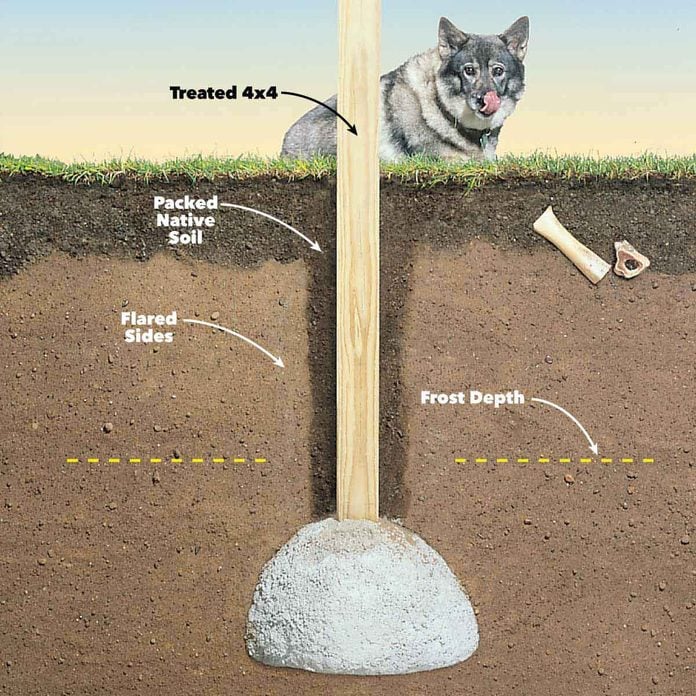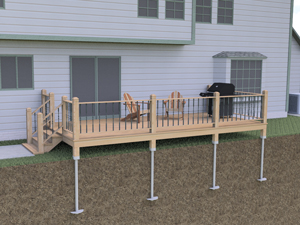Engineered for Success: The Science Behind Durable and Resilient Deck Footings
Make Certain Stability and Durability With Properly Set Up Deck Grounds
Deck footings might not be the most attractive facet of deck building, however they play an essential role in making certain stability and durability. Effectively installed footings give a solid foundation for your deck, protecting against common problems like drooping, changing, and also collapse. Picking the right type of footing and appropriately installing it can be a complex process. In this discussion, we will certainly discover the importance of correct deck grounds, variables to think about during setup, different kinds of grounds available, detailed setup guide, and maintenance tips for ensuring durable grounds. So, if you desire to make sure the stability and longevity of your deck, maintain checking out to discover the key understandings to attain a structurally sound and durable outdoor room.

Value of Appropriate Deck Grounds
Why are correctly installed deck grounds critical for the stability and durability of your deck? Deck footings are the structure on which the deck relaxes, moving the lots from the deck to the ground.
Firstly, appropriately mounted deck grounds disperse the weight of the deck equally, protecting against any irregular settling or sinking. This is especially crucial in locations with unsteady dirt, as it aids to minimize the danger of the deck shifting or collapsing. Furthermore, well-installed footings ensure that the deck continues to be degree, avoiding any kind of structural damage that can take place when a deck ends up being uneven.
Second of all, appropriately installed grounds supply a strong anchor for the deck, stopping too much motion and guide. This assists to keep the structural honesty of the deck, minimizing the threat of mishaps or injuries. It likewise minimizes the deterioration on the deck, allowing it to endure the elements and regular usage for a longer time period.
Aspects to Consider for Deck Footing Installment
When mounting deck grounds, there are several essential aspects to take into consideration for proper setup. Different dirt kinds have various load-bearing capabilities, so it is essential to carry out a dirt test to guarantee the grounds can support the weight of the deck and its occupants. By taking right into account these aspects, you can make sure the appropriate setup of deck footings and enjoy a long-lasting and steady deck.
Types of Deck Grounds to Pick From
There are a number of different sorts of deck footings available for you to pick from. Each type has its very own advantages and disadvantages, so it's essential to consider your specific requirements and the conditions of your deck prior to deciding.
One usual type of deck ground is the concrete ground. This entails digging openings in the ground and putting concrete right into them to create a solid structure. Concrete grounds are resilient and supply excellent stability, making them ideal for decks in locations with challenging soil conditions or high wind lots.
One more choice is the helical pier ground, which contains a steel shaft with helical plates that are screwed right into the ground. These grounds are quick to set up and can be made use of in numerous soil kinds, including sandy or clay soils. They are likewise adjustable, permitting easy leveling of the deck.
Sonotube footings are one more prominent selection. These grounds are created by placing a cardboard tube in a hole and loading it with concrete. Sonotube grounds are relatively easy to set up and offer appropriate security for smaller sized decks or in locations with less requiring dirt problems.

When selecting the sort of deck footing, it's essential to think about elements such as soil conditions, deck size and weight, neighborhood building codes, and personal preferences. By choosing the proper ground kind, you can ensure the security and longevity of your deck.
Step-by-Step Guide for Putting Up Deck Footings

Determine the place: Begin by noting the specific placement of each footing making use of risks and string (Deck Footings). Take into account any type of neighborhood building regulations or regulations relating to obstacle ranges
Dig the openings: Make use of a post hole digger or an auger to dig the holes for the footings. The depth will depend on the frost line in your area and the sort of dirt. Generally, a depth of at least 36 inches is recommended for security.
Degree the openings: Make sure that the bases of the holes are level (Deck Footings). This can be achieved by using a degree or a straight board throughout the top of the holes
Add gravel: Area a layer of crushed rock at the bottom of each hole to boost water drainage and protect against the ground from sinking into the dirt with time.
Put the footing kinds: Place the footing creates right into the holes, guaranteeing they are centered and degree. Usage stakes to secure them in area.
Mix and pour concrete: Follow the guidelines on the concrete mix bag to prepare the concrete. Pour the concrete right into the ground forms, loading them completely.
Smooth the surface area: Use a trowel to smooth the surface area of the concrete and remove any air pockets. Permit the concrete to treat according to the maker's instructions.
Upkeep Tips for Lasting Deck Grounds
Proper maintenance is crucial for guaranteeing the longevity and security of deck grounds. By regularly inspecting and keeping your deck grounds, you can protect against damages and prospective security risks.
Regular cleansing is likewise necessary for preserving deck grounds. Plants, debris, and dirt can accumulate around the grounds, which can lead to moisture build-up and decay. Cleansing the grounds routinely, making use of a stress or a brush washer, can aid avoid these concerns and extend the life expectancy of your deck.
Along with cleansing, it is very important to keep the area around the footings clear of any kind of obstructions. Prevent stacking products versus the grounds or allowing plants to expand also close to them. These obstructions can trap dampness and cause the grounds to deteriorate in time.
Last but not least, regular resealing of the footings is suggested to shield them from moisture and other environmental factors. Read More Here Using a waterproof sealant can help avoid water damage and extend the lifespan of the grounds.
Verdict
To conclude, correct setup of deck grounds is vital for making certain security and durability of your deck. Elements such as soil kind, tons capacity, and local structure codes need to be considered when selecting the right sort of deck grounds. Complying with a detailed overview for installment and routine upkeep will certainly help to make certain the footings continue to be lasting and durable.
In this conversation, we will discover the significance of proper deck grounds, factors to take into consideration throughout installation, different kinds of footings readily available, step-by-step setup overview, and maintenance pointers for guaranteeing long-lasting footings. Deck grounds are the structure on which the deck rests, transferring the tons from the deck to the ground.One usual type of deck ground is the concrete ground. Insert the ground kinds: Insert the ground creates into you can try these out the holes, guaranteeing they are focused and level.In final thought, correct installation of deck footings is essential for making sure security and long life of your deck.